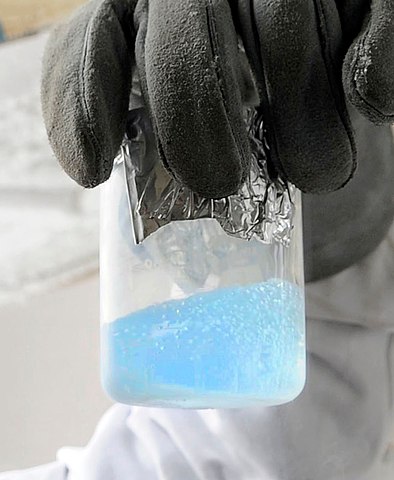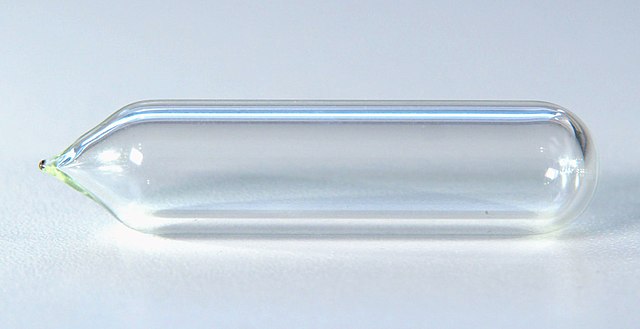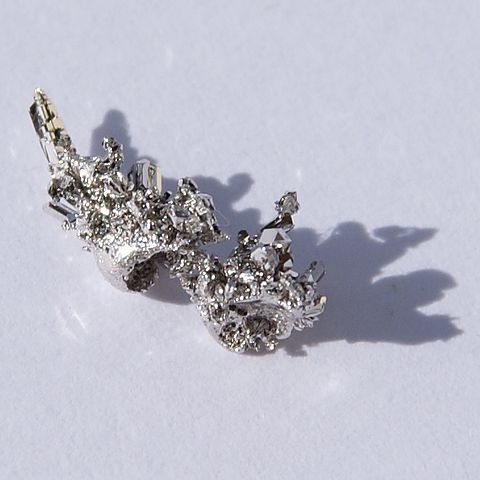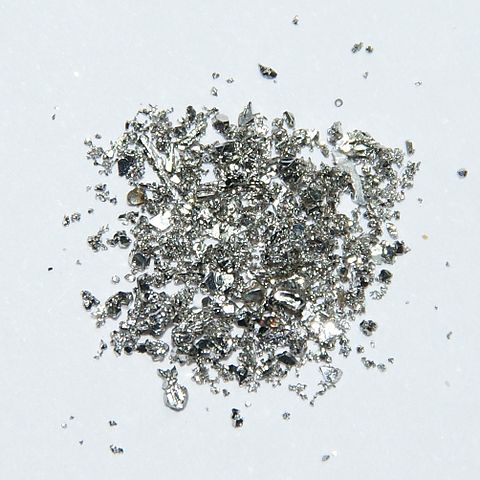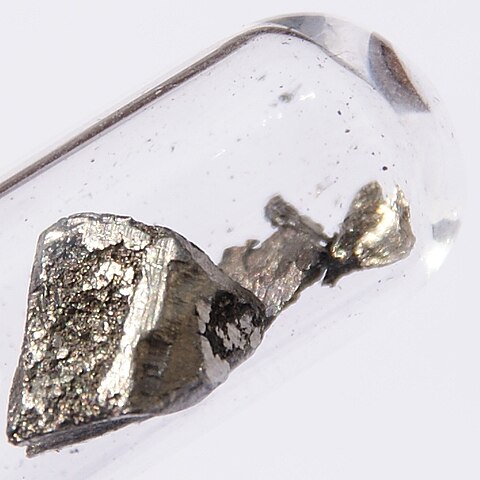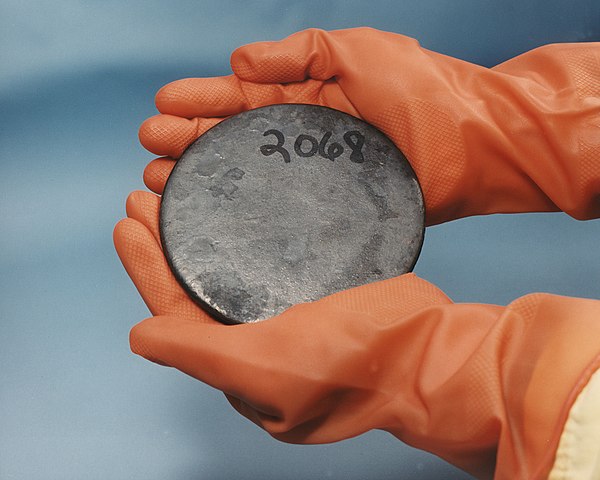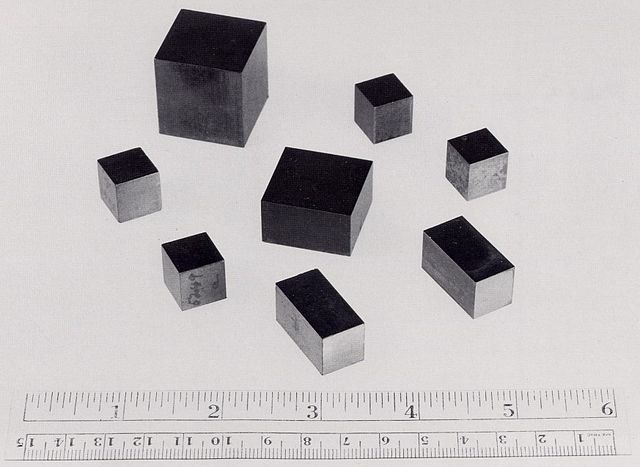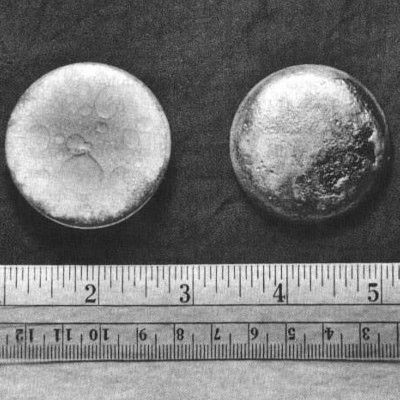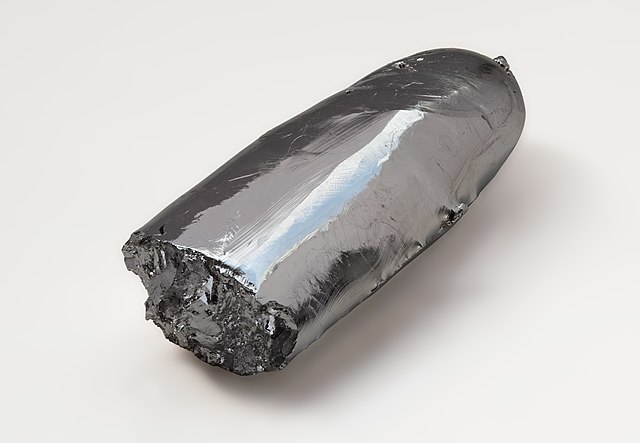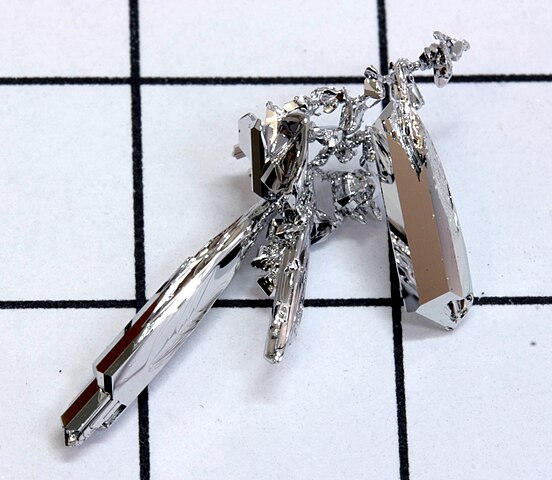Welcome to a comprehensive guide for understanding sodium! As an essential mineral for our bodies, sodium plays a crucial role in various bodily functions. However, with the growing availability of processed and packaged foods, many people are consuming excessive amounts of sodium without realizing the potential health risks. This article aims to provide an in-depth understanding of sodium and its impact on our health.
Why is it important to understand sodium?
Sodium is a mineral found in our food that helps regulate fluid balance, maintain nerve and muscle function, and control blood pressure. However, excessive sodium intake has been linked to various health problems, including hypertension and heart disease. By understanding the role of sodium in our bodies and the risks of excessive consumption, we can make informed decisions about our dietary choices.

The purpose of this guide
This guide will provide you with a thorough understanding of sodium, including its definition, recommended intake, and potential health effects. We will also discuss the impact of sodium on the food industry and provide practical tips for reducing sodium intake in our diets. Additionally, we will explore how different dietary needs, such as pregnancy, infants, and the elderly, may be affected by sodium consumption. Let's dive into the world of sodium and discover how it affects our health!
What is Sodium?
Sodium is a mineral that is essential for our body to function properly. It is a chemical element with the symbol Na and atomic number 11. This silvery-white metal is highly reactive and can be found in nature in its ionic form as sodium chloride, also known as table salt. Sodium is the sixth most abundant element on Earth, and it plays a vital role in various bodily functions.
Our bodies need sodium to maintain a balance of fluids, transmit nerve impulses, and contract and relax muscles. It also plays a crucial role in keeping our blood pressure levels stable and maintaining a healthy pH balance in our body. On average, an adult human body contains about 250 grams of sodium, with most of it stored in our bones and the rest in our blood, muscles, and other body tissues.
Natural sources of sodium in our diet include fruits, vegetables, and dairy products. However, the majority of sodium in our diet comes from processed and packaged foods, such as canned soups, chips, and processed meats. The recommended daily intake of sodium for an average adult is 2,300 milligrams (mg). However, most people consume more than double this amount, which can have negative effects on our health.
Excessive sodium intake has been linked to various health issues, including high blood pressure, heart disease, and stroke. According to the World Health Organization, approximately 1.65 million deaths per year can be attributed to high sodium consumption. This is due to the fact that high sodium intake can cause the body to retain water, which increases blood volume and puts pressure on the blood vessels, leading to hypertension and other cardiovascular problems.
In addition to its effects on blood pressure, excessive sodium consumption has been linked to other chronic diseases, such as osteoporosis, kidney disease, and stomach cancer. Studies have also shown that a high-sodium diet can have a negative impact on our cognitive function and increase the risk of developing dementia.
To reduce our sodium intake, it is essential to pay attention to the nutrition labels on packaged foods. The ingredient list on these labels should be checked for words such as “sodium,” “salt,” or “soda,” which indicate a high sodium content. It is also important to note that some foods, such as bread and cheese, may not taste salty but still contain a significant amount of sodium.
To maintain a healthy balance, it is recommended to choose fresh and unprocessed foods and limit our consumption of processed and packaged foods. Adding herbs and spices to our meals can also enhance flavor without the need for extra salt. Replacing high-sodium foods with healthier alternatives, such as fresh fruits and vegetables, can also help reduce our sodium intake and improve our overall health.
In addition to its effects on the general population, sodium intake can also have significant implications for certain groups, including pregnant women, infants, and the elderly. For pregnant women, excessive sodium intake can lead to complications such as preeclampsia and high blood pressure, while for infants, it can increase the risk of developing high blood pressure later in life. The elderly, who are more susceptible to high blood pressure, should also monitor their sodium intake and limit their consumption of processed and packaged foods.
In conclusion, sodium is an essential mineral for our body, but excessive intake can have negative effects on our health. It is important to be mindful of our sodium consumption and choose healthier options when it comes to our diet. By understanding the role of sodium in our body and making small changes in our daily food choices, we can maintain a healthy balance and improve our overall well-being.
The Health Effects of Sodium
Sodium is an essential mineral that plays a crucial role in our body's functioning. It helps regulate fluid balance, nerve and muscle function, and maintain healthy blood pressure levels. However, when consumed in excess, sodium can have detrimental effects on our health.
Excessive sodium intake has been linked to various health issues, with hypertension being the most commonly associated one. According to the World Health Organization (WHO), hypertension affects 1.13 billion people globally, and the number is expected to increase to 1.56 billion by 2025. High blood pressure puts individuals at a higher risk of heart disease, stroke, and other chronic conditions.
Research has shown that a diet high in sodium is a significant contributor to the development of hypertension. When we consume too much sodium, our body retains water to balance the concentration of sodium in our blood. This retention of water puts pressure on our blood vessels, increasing our blood pressure levels. Over time, this can lead to damage to the blood vessels and increase the risk of cardiovascular diseases.
Apart from hypertension, excessive sodium consumption has also been linked to other health issues. These include kidney disease, osteoporosis, and stomach cancer. Additionally, a high sodium diet can also cause bloating and water retention, leading to discomfort and weight gain.
However, the good news is that reducing sodium intake can have a positive impact on our health. The WHO recommends limiting sodium intake to less than 2,000 mg per day, which is approximately one teaspoon of salt. By doing so, we can lower our blood pressure and reduce the risk of developing chronic diseases.
One way to reduce sodium intake is by choosing to eat fresh, whole foods instead of processed and packaged foods. Processed foods are often high in sodium as it is commonly used as a preservative. By focusing on whole foods such as fruits, vegetables, and lean proteins, we can significantly decrease our sodium intake.
Furthermore, being mindful of nutrition labels can also help monitor our sodium intake. The nutrition label on packaged foods contains information about the sodium content per serving, making it easier to make informed and healthier choices. Opting for low-sodium or no-salt-added products can also be beneficial.
In conclusion, excessive sodium consumption can have severe negative effects on our health. It is essential to be mindful of our sodium intake and make conscious decisions to reduce it. By doing so, we can improve our overall health and reduce the risk of developing chronic diseases.
Sodium in Our Food
Sodium is an essential mineral that is found naturally in many foods and is also added to processed and packaged foods for preservation and flavor enhancement. However, most people consume more sodium than their body needs, leading to negative health effects. In this section, we will explore the reasons behind the high sodium content in our food, its impact on the food industry, and ways to reduce our sodium intake for better health.
Why is there a high sodium content in processed and packaged foods?
Processed and packaged foods are convenient and readily available, making them a popular choice for many. However, these foods are often high in sodium due to the addition of salt, which is used as a preservative and flavor enhancer. Salt helps to extend the shelf life of these foods, making them last longer and reducing the risk of spoilage. It also adds a savory taste to the food, making it more appealing to consumers. As a result, food manufacturers often add excessive amounts of sodium to processed and packaged foods, which can contribute significantly to our daily sodium intake.
The impact of excessive sodium consumption on the food industry:
The high demand for processed and packaged foods has led to a significant impact on the food industry. Food manufacturers often prioritize taste, shelf life, and cost-effectiveness over the health implications of their products. As a result, they continue to add high amounts of sodium to their products, making it challenging for consumers to make healthier choices. However, with growing awareness and demand for healthier food options, many food companies are now offering low-sodium alternatives, making it easier for consumers to watch their sodium intake.
Tips for reading and understanding nutrition labels to monitor sodium intake:
One of the best ways to reduce your sodium intake is to be mindful of the nutrition labels on packaged foods. The nutrition label provides information on the nutrient content of the food, including sodium. To monitor your sodium intake, look for the “Sodium” section on the label, which provides the amount of sodium in milligrams (mg) per serving. Keep in mind that the recommended daily intake of sodium for adults is 2,300 mg or less, and for certain groups such as individuals with hypertension, it is recommended to consume no more than 1,500 mg per day. Reading and understanding nutrition labels can help you make informed decisions about the foods you consume.
Healthier alternatives to high-sodium foods:
There are plenty of healthier alternatives to high-sodium foods that can help you reduce your sodium intake. Fresh fruits and vegetables, lean proteins, and whole grains are naturally low in sodium and provide essential nutrients for your body. You can also opt for low-sodium or no-sodium added versions of your favorite foods, such as canned vegetables or soups. Another tip is to use herbs and spices to add flavor to your meals instead of salt. By making simple swaps and incorporating more whole foods into your diet, you can significantly reduce your sodium intake and improve your overall health.
In conclusion, the high sodium content in our food is a significant contributor to our daily sodium intake, which can have negative effects on our health. By being aware of the reasons behind the high sodium content in processed and packaged foods, understanding nutrition labels, and making healthier food choices, we can reduce our sodium intake and improve our overall well-being.
Sodium and Our Health
Sodium is an essential mineral that plays a crucial role in our health. It helps regulate fluid balance, muscle and nerve function, and blood pressure. However, excessive intake of sodium can have negative effects on our health. In this section, we will discuss the relationship between sodium and our health and provide tips for reducing sodium intake in our diet.
The Relationship Between Sodium and Blood Pressure:
High sodium intake has been linked to an increase in blood pressure, which is a major risk factor for heart disease and stroke. When we consume too much sodium, it causes an increase in fluid retention in the body, which in turn raises blood pressure. This puts a strain on the heart and can lead to serious health issues. In fact, studies have shown that reducing sodium intake can significantly lower blood pressure levels.
The Role of Sodium in Fluid Balance and Hydration:
Sodium plays a crucial role in regulating fluid balance in our body. It works with other electrolytes to maintain the right amount of water in our cells and tissues. This is necessary for proper hydration, nerve function, and muscle contraction. However, when we consume too much sodium, it can disrupt this balance and lead to dehydration. This is because our body needs to work extra hard to flush out the excess sodium, causing us to lose more water than usual.
Tips for Reducing Sodium Intake:
Reducing sodium intake is crucial for maintaining good health. Here are some tips to help you lower your sodium intake:
1. Read Nutrition Labels: One of the best ways to monitor your sodium intake is to read nutrition labels on packaged foods. Look for items with less than 140 mg of sodium per serving.
2. Limit Processed Foods: Processed and packaged foods are often high in sodium. Try to limit your intake of these foods and opt for fresh, whole foods instead.
3. Use Herbs and Spices: Instead of using salt to flavor your food, try using herbs and spices. They add flavor without the added sodium.
4. Cook at Home: When cooking at home, you have control over the amount of sodium in your meals. Use less salt and incorporate other flavorings like lemon juice or vinegar.
5. Choose Low-Sodium Options: When buying canned or packaged foods, opt for low-sodium or no-sodium options.
Benefits of a Low-Sodium Diet:
Reducing sodium intake has many benefits for our overall health. It can lower blood pressure, reduce the risk of heart disease and stroke, and improve kidney function. It can also help with weight loss, as excess sodium causes water retention and bloating. Additionally, a low-sodium diet can improve overall hydration and decrease the risk of dehydration.
In conclusion, while sodium is an essential mineral for our health, excessive intake can have negative effects. It is important to monitor our sodium intake and make necessary changes to our diet to maintain good health. By following the tips mentioned above and choosing healthier alternatives, we can reduce our sodium intake and improve our overall well-being.
Sodium and Different Dietary Needs
Sodium is an essential mineral that plays a crucial role in various bodily functions. However, its intake must be regulated, especially for certain groups with specific dietary needs. These groups include pregnant women, infants, and the elderly.
Pregnant women require an adequate intake of sodium for the proper development of the baby's nervous system and maintaining proper fluid balance. However, excessive sodium intake can lead to complications such as high blood pressure and swelling (edema). Therefore, it is essential for pregnant women to monitor their sodium intake and follow the recommended daily intake of 2300 mg or less.
Infants, on the other hand, have different sodium needs compared to adults. While breast milk and infant formula contain an adequate amount of sodium for their growth and development, it is crucial to monitor the amount of sodium in solid foods given to infants. Processed and packaged baby foods can contain high levels of sodium, which can be harmful to their developing kidneys. As a result, babies should be introduced to solid foods gradually and in moderation, with a focus on natural and low-sodium options.
The elderly are also a vulnerable group when it comes to sodium intake. As we age, our body's ability to regulate sodium levels decreases, making us more prone to the negative effects of excessive sodium intake. High sodium diets in the elderly can lead to an increased risk of high blood pressure, stroke, and heart disease. Therefore, it is essential for this group to limit their sodium intake to 1500 mg or less per day.
For these specific groups, it is crucial to follow a low-sodium diet. This means avoiding processed and packaged foods, which can be high in sodium. Instead, incorporating fresh, whole foods such as fruits, vegetables, and lean proteins into the diet can help meet the recommended sodium intake while providing essential nutrients for their specific needs.
To effectively manage sodium intake, it is essential to read and understand nutrition labels on packaged foods. Look for keywords such as “sodium-free,” “low sodium,” or “reduced sodium” when choosing foods. It is also helpful to look at the milligrams (mg) of sodium per serving and consider the serving size. Be mindful of hidden sources of sodium, such as condiments, sauces, and canned foods.
Aside from regulating sodium intake, other lifestyle changes can also benefit these specific groups. For instance, pregnant women and the elderly can incorporate physical activity into their daily routine to help control blood pressure and fluid balance. Infants can benefit from breastfeeding, which provides the necessary nutrients and helps regulate sodium intake.
In conclusion, sodium intake must be regulated for different dietary needs, including pregnant women, infants, and the elderly. These groups can benefit from following a low-sodium diet and making lifestyle changes to ensure their sodium intake is within the recommended levels. By understanding the importance of sodium and its effects on specific dietary needs, we can promote better health and well-being for these vulnerable groups.
| Sodium | ||||||||||||||||||||||||||
|---|---|---|---|---|---|---|---|---|---|---|---|---|---|---|---|---|---|---|---|---|---|---|---|---|---|---|
| Appearance | silvery white metallic | |||||||||||||||||||||||||
| Standard atomic weight Ar°(Na) | ||||||||||||||||||||||||||
|
||||||||||||||||||||||||||
| Sodium in the periodic table | ||||||||||||||||||||||||||
| Atomic number (Z) | 11 | |||||||||||||||||||||||||
| Group | group 1: hydrogen and alkali metals | |||||||||||||||||||||||||
| Period | period 3 | |||||||||||||||||||||||||
| Block | s-block | |||||||||||||||||||||||||
| Electron configuration | [Ne] 3s1 | |||||||||||||||||||||||||
| Electrons per shell | 2, 8, 1 | |||||||||||||||||||||||||
| Physical properties | ||||||||||||||||||||||||||
| Phase at STP | solid | |||||||||||||||||||||||||
| Melting point | 370.944 K (97.794 °C, 208.029 °F) | |||||||||||||||||||||||||
| Boiling point | 1156.090 K (882.940 °C, 1621.292 °F) | |||||||||||||||||||||||||
| Density (near r.t.) | 0.968 g/cm3 | |||||||||||||||||||||||||
| when liquid (at m.p.) | 0.927 g/cm3 | |||||||||||||||||||||||||
| Critical point | 2573 K, 35 MPa (extrapolated) | |||||||||||||||||||||||||
| Heat of fusion | 2.60 kJ/mol | |||||||||||||||||||||||||
| Heat of vaporization | 97.42 kJ/mol | |||||||||||||||||||||||||
| Molar heat capacity | 28.230 J/(mol·K) | |||||||||||||||||||||||||
Vapor pressure
|
||||||||||||||||||||||||||
| Atomic properties | ||||||||||||||||||||||||||
| Oxidation states | −1, 0,[2] +1 (a strongly basic oxide) | |||||||||||||||||||||||||
| Electronegativity | Pauling scale: 0.93 | |||||||||||||||||||||||||
| Ionization energies |
|
|||||||||||||||||||||||||
| Atomic radius | empirical: 186 pm | |||||||||||||||||||||||||
| Covalent radius | 166±9 pm | |||||||||||||||||||||||||
| Van der Waals radius | 227 pm | |||||||||||||||||||||||||
| Other properties | ||||||||||||||||||||||||||
| Natural occurrence | primordial | |||||||||||||||||||||||||
| Crystal structure | body-centered cubic (bcc) | |||||||||||||||||||||||||
| Speed of sound thin rod | 3200 m/s (at 20 °C) | |||||||||||||||||||||||||
| Thermal expansion | 71 µm/(m⋅K) (at 25 °C) | |||||||||||||||||||||||||
| Thermal conductivity | 142 W/(m⋅K) | |||||||||||||||||||||||||
| Electrical resistivity | 47.7 nΩ⋅m (at 20 °C) | |||||||||||||||||||||||||
| Magnetic ordering | paramagnetic | |||||||||||||||||||||||||
| Molar magnetic susceptibility | +16.0×10−6 cm3/mol (298 K) | |||||||||||||||||||||||||
| Young's modulus | 10 GPa | |||||||||||||||||||||||||
| Shear modulus | 3.3 GPa | |||||||||||||||||||||||||
| Bulk modulus | 6.3 GPa | |||||||||||||||||||||||||
| Mohs hardness | 0.5 | |||||||||||||||||||||||||
| Brinell hardness | 0.69 MPa | |||||||||||||||||||||||||
| CAS Number | 7440-23-5 | |||||||||||||||||||||||||
| History | ||||||||||||||||||||||||||
| Discovery and first isolation | Humphry Davy (1807) | |||||||||||||||||||||||||
| Symbol | “Na”: from New Latin natrium, coined from German Natron, ‘natron' | |||||||||||||||||||||||||
|
||||||||||||||||||||||||||

